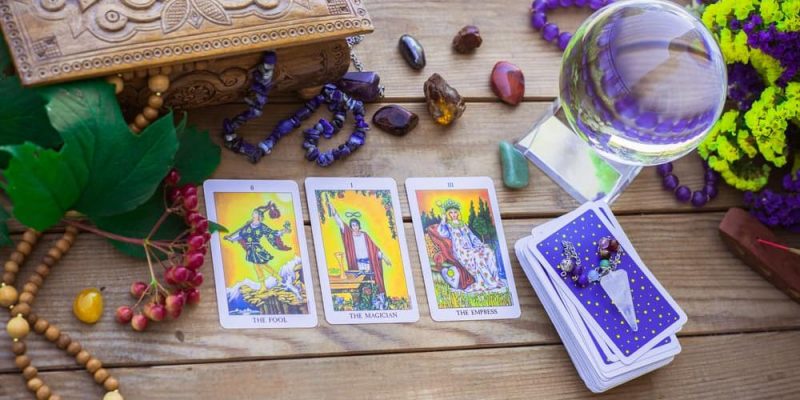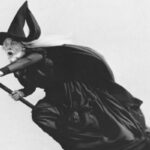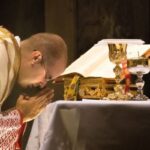We explain what magic is, the two ways of understanding it and its history. Also, the characteristics of each type of magic.

What is magic?
Broadly speaking, there are two different ways of understanding the meaning of magic:
The first and most traditional, is understood as the belief that through rituals, spells and arcane knowledge, supernatural forces can be manipulated to affect reality as we please.
These powers would be used by sorcerers, magicians, witches and other mythological figures to whom tradition attributes occult knowledge of the world, collected in magical books and put into action through potions, magic wands and other elements supposedly of power.
The second consideration, also called illusionism, refers instead to the art of producing illusions on stage using more or less elaborate tricks that give the sensation, precisely, that there are invisible and supernatural forces at work. Unlike the previous case, this concept of magic is the one put into practice, in the real world, by illusionists and conjurers, for entertainment purposes.
Both concepts are the result of a tradition that imagines the existence of knowledge and powers intermediate between religion and science, close to alchemy, necromancy, thaumaturgy and other forms of occultism. These supposed knowledge and practices, usually attributed to ancient pagan cultures, were persecuted by the great monotheistic religions and punished with a severe hand, just as happened with witchcraft and herbalism.
Magic is immensely attractive, since it implies that reality can be molded to our whim if we know the necessary formulas or incantations. In fact, from a certain point of view, the barriers that differentiate magic from other verifiable knowledge are difficult to draw: for a person from the Middle Ages, many of the daily tasks that science allows today could be classified as “magic.”
See also: Witchcraft
history of magic

The word “magic” comes from Latin magicin turn inheritance from the Greek mageiaa term with which the ancient Greeks referred to the qualities attributed to the priests of Persian Zoroastrianism. That is to say, the origin of said word surely dates back to Farsi (magush).
Persian priests were enormously influential in their society between the 6th and 5th centuries BC. C. They used to do their Mazdeist rites and chants in front of bonfires, so In the West, supernatural and demonic powers were attributed to the Persians.
The term magus of the Romans, in fact, it was reserved for those who, like said priests, practiced occultism and the sinister arts. However, It was the Christians who later undertook the persecution of the magi accusing them of making a pact with the devil and of being, essentially, heretics, servants of Satan.
With that same criterion, the Christian West responded to the ritual traditions of pagan peoples, of oriental peoples, and even to the first forms of scientific thought. It was common, for example, in colonial times, for the practice of magic or magical rites to be attributed to subject peoples.
In colonial Hispanic America, for example, The indigenous people were imagined as heirs of powerful magical traditions or spiritual, which were considered sinful. The practice of necromancy, better known as voodoo, was attributed to African slaves. Magic, as will be seen, has awakened fascination and at the same time distrust in humans since ancient times.
On the other hand, illusionists have existed since ancient times as well, and have been nourished by the belief in such occult powers and traditions. In fact, there are records of “magicians” in Ancient Egypt, more than 4,000 years ago.
However, The profession of illusionist only emerged in the 16th century hand in hand – curiously – with science, since the first conjurers and spiritualists used mechanisms and illusions to fake magical powers.
This tradition became a spectacle in the 19th century, with the appearance of the first escapist magicians, such as the famous Harry Houdini (1874-1926). Later they had the opportunity to present themselves to large audiences through the media.
Types of magic
Traditionally, various traditions of supposed magic are distinguished, depending on their nature and the moral or ethical consideration of their actions. Thus, for example, we usually speak of “white” magic when its purposes are well-intentioned, and of “black” magic in the completely opposite case. Similarly, the following magical “forms” can be differentiated:
- Divination. As its name suggests, it is the magic that is used to predict the future or see what cannot ordinarily be seen. Its traditional symbol is the crystal ball: an artifact in which images of the future could supposedly be seen, or of what was happening elsewhere in the world. The use of cards is also common (such as tarot), palm reading, and other supposed methods that interpret clues from the future into the present.
- necromancy. It is magic that deals with the dead and the world of the deceased, whether reviving people, invoking spirits, or carrying out rites that require corpse parts. It is associated with the living dead, pestilence, witchcraft and the arts of the devil.
- pyromancy. This is the name given to the magic of fire: that which is supposedly mastered by those who establish a pact with said element, to subject it to the management of their will. Pyromancers could not only -supposedly- give orders to fire, but also generate it spontaneously.
- sexual magic. Starting from the consideration of sex as a sacred and powerful practice, this tradition attributes magical abilities to the fluids of the body, to certain postures or erotic practices, and aspired to provoke falling in love and passion at will among human beings.
- The invocation. In this type of magical practices, rituals are used to summon or attract demonic, supernatural or mystical entities to the real plane, which otherwise could not interfere in reality. In exchange for this, or precisely as a condition for letting them return to their usual plane, the summoners used to ask for favors or demand the use of their powers. An ancient and oriental version of this is the one that imagines the genie trapped in a magic lamp, which will grant three wishes to whoever releases it.
- Thaumaturgy. Understood as magic that transforms or creates matter, it can be understood as a predecessor of alchemy. Thaumaturges could convert materials into others at will, or make them appear out of thin air, and could also confer certain gifts on specific objects, such as relics. This is the case of the supposed holy chalice, which immediately purified everything that was poured into it.
- The evil eye. One of the most popular and common forms of magic, which consists of the possibility of bewitching another person or harming them just by looking at them, especially when it is the result of envy. To do this, it is common (still today) to use protective amulets such as jet or peony seed, especially on newborn children.
Continue with: Superstition
References
- “Magic” on Wikipedia.
- “Illusionism” on Wikipedia.
- “Magic” in the Dictionary of the Language of the Royal Spanish Academy.
- “Magic” in The Encyclopaedia Britannica.





